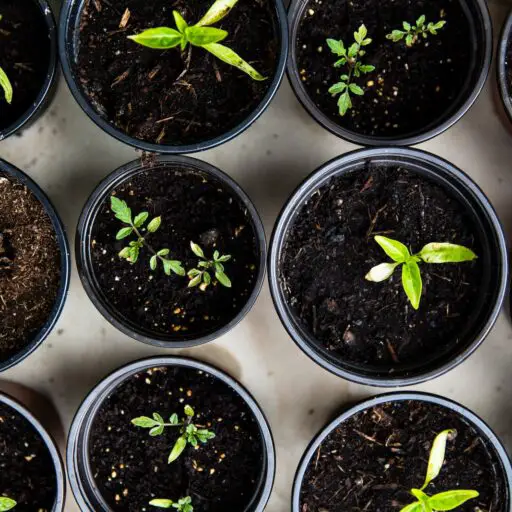Support our educational content for free when you purchase through links on our site. Learn more
Are you ready to dig deep into the world of community gardening? Whether you’re a seasoned green thumb or a curious newbie, maintaining a successful and sustainable community garden can be a rewarding adventure! 🌼 Did you know that community gardens can increase food security and improve mental health? According to a study by the American Community Gardening Association, participants in community gardens consume 1.4 more servings of fruits and vegetables daily! In this article, we’ll explore 15 essential tips that will help you cultivate not just plants, but also connections within your community. From soil health to seasonal maintenance, we’ve got you covered!
Imagine walking through a vibrant garden filled with colorful vegetables, fragrant herbs, and the laughter of neighbors working side by side. That’s the power of community gardening! So grab your trowel and let’s get started on this green journey together! 🌿
Key Takeaways
- Community gardens foster connection: They bring people together, enhancing social bonds and community spirit.
- Sustainable practices are key: Implementing composting, crop rotation, and efficient irrigation can lead to a thriving garden.
- Engagement is essential: Involve your community through events, workshops, and open communication to ensure everyone feels included.
- Seasonal maintenance matters: Regular upkeep throughout the year is crucial for a successful garden.
- Address challenges proactively: Establish clear guidelines and conflict resolution processes to maintain harmony.
Ready to gear up for your gardening journey? 👉 Shop Gardening Tools on: Amazon | Walmart | Home Depot. Let’s grow together! 🌻
Table of Contents
- Quick Tips and Facts
- The Roots of Community Gardening: A Historical Perspective
- What Is A Community Garden? Understanding the Concept
- The Blossoming Benefits of Community Gardens
- Essential Land Requirements for a Thriving Community Garden
- Developing a Community Garden: From Idea to Reality
- Sustainable Practices for Maintaining Your Community Garden
- Engaging the Community: Building Strong Connections
- Seasonal Maintenance Tips for Year-Round Success
- Common Challenges and Solutions in Community Gardening
- The Takeaway: Growing Together for a Greener Future
- Conclusion
- Recommended Links
- FAQ
- Reference Links
Quick Tips and Facts
We at Community Gardening™ are excited to share our expertise on maintaining a successful and sustainable community garden 🌱. As we dive into the world of community gardening, let’s start with some quick tips and facts. Did you know that community gardens can increase food security, provide access to healthy produce, and offer exercise and stress relief? 🥗 According to the University of Minnesota, households with a member in a community garden consume 1.4 more servings of fruits and vegetables per day.
Benefits of Community Gardens
Community gardens are not just about growing plants; they also foster a sense of community and provide educational experiences 🌿. As mentioned in the Community Garden Toolkit, community gardens can increase biodiversity, reduce rain runoff, and provide a place to recycle organic materials for compost.
The Roots of Community Gardening: A Historical Perspective
Community gardening has a rich history, dating back to the 19th century 📚. The concept of community gardening has evolved over time, with various models and approaches emerging. For example, the Victory Garden movement during World War I and II encouraged people to grow their own food to support the war effort. Today, community gardening is more than just a hobby; it’s a way to build connections, promote sustainability, and foster community engagement 🌈.
What Is A Community Garden? Understanding the Concept
A community garden is a plot of land where multiple gardeners contribute to growing vegetables, fruits, or plants, either individually or collectively 🌱. As defined by Productive Parks, community gardens can be on private land or underused public lands. Our team at Community Gardening™ has experience with various types of community gardens, including community vegetable garden projects.
The Blossoming Benefits of Community Gardens
The benefits of community gardens are numerous and well-documented 🌼. Some of the benefits include:
- Sense of community
- Encourages outdoor activity and reconnection with nature
- Increases food security
- Provides access to healthy produce
- Offers exercise and stress relief
- Provides educational experiences
- Gives gardening opportunities to those without backyards
- Reduces rain runoff
- Increases biodiversity
- Provides a place to recycle organic materials for compost
Essential Land Requirements for a Thriving Community Garden
When it comes to establishing a community garden, land requirements are crucial 🌳. Some essential factors to consider include:
- At least 6 hours of sunlight daily
- Good drainage
- Accessibility for participants
- Near a water source
- Soil test to ensure safety for growing edible food
Developing a Community Garden: From Idea to Reality
Developing a community garden requires careful planning and execution 📊. Our team at Community Gardening™ recommends the following steps:
- Find available land: Look for vacant lots near water with decent soil.
- Engage your community: Crowdsource ideas and funds, outline roles and responsibilities, and create a Rules and Agreements document.
- Find resources: Explore community garden grants, corporate sponsorships, and liability insurance costs.
- Decide what to plant: Consider local climate, sunlight, and soil conditions, and focus on produce that meets the community’s needs.
Sustainable Practices for Maintaining Your Community Garden
Maintaining a community garden requires sustainable practices 🌿. Some tips include:
- Using compost and mulch to reduce waste and retain moisture
- Implementing efficient irrigation systems
- Encouraging biodiversity through crop rotation and companion planting
- Promoting integrated pest management techniques
Engaging the Community: Building Strong Connections
Community gardens are not just about growing plants; they’re also about building connections 🌈. Our team at Community Gardening™ recommends the following strategies to engage your community:
- Host community events and workshops
- Create a social media group or online forum for gardeners to share tips and ideas
- Establish a volunteer program to maintain the garden and promote a sense of ownership
Seasonal Maintenance Tips for Year-Round Success
Seasonal maintenance is crucial for a thriving community garden 🌞. Our team at Community Gardening™ recommends the following tips:
- Spring: Prepare the soil, plant new crops, and repair any damage from the winter.
- Summer: Water regularly, monitor for pests and diseases, and harvest crops.
- Fall: Clean up the garden, plant new crops, and prepare for the winter.
- Winter: Protect the garden from extreme weather conditions, and plan for the upcoming season.
Common Challenges and Solutions in Community Gardening
Community gardening is not without its challenges 🌪️. Some common issues include:
- Conflict resolution: Establish a clear communication channel and conflict resolution process.
- Funding: Explore community garden grants, corporate sponsorships, and crowdfunding options.
- Maintenance: Establish a volunteer program and create a maintenance schedule.
The Takeaway: Growing Together for a Greener Future
In conclusion, community gardening is a powerful way to build connections, promote sustainability, and foster community engagement 🌟. By following these tips and best practices, you can create a thriving community garden that benefits everyone involved. Remember to stay connected with your community, share your experiences, and keep learning and growing 🌱. For more information on community gardening, visit our Garden Design Ideas and Garden Maintenance Tips pages.
Conclusion

In summary, maintaining a successful and sustainable community garden is not just about growing plants; it’s about cultivating relationships, fostering community spirit, and promoting environmental stewardship 🌍. By implementing the tips and strategies we’ve discussed, you can create a flourishing garden that serves as a hub for connection, education, and healthy living.
Remember, the journey of community gardening is a shared experience. As you engage with your neighbors and fellow gardeners, you’ll find that the rewards extend far beyond the harvest. So, roll up your sleeves, dig in, and watch your community blossom! 🌼
Recommended Links
- 👉 Shop Gardening Tools on: Amazon | Walmart | Home Depot
- Books on Community Gardening:
FAQ

How can I get my community involved in a local garden project and encourage participation?
Getting your community involved starts with outreach and engagement. Here are some strategies:
- Host an Informational Meeting: Invite community members to learn about the benefits of gardening.
- Create a Social Media Group: Use platforms like Facebook or Instagram to share updates and gather interest.
- Organize Events: Plan events like planting days, harvest festivals, or educational workshops to attract participation.
- Incentives: Offer incentives like free seeds or gardening tools for volunteers.
What are the most important factors to consider when designing a sustainable community garden layout?
When designing your garden, consider these key factors:
- Sunlight and Shade: Ensure your garden receives adequate sunlight (at least 6 hours a day) and plan for shade from trees or buildings.
- Accessibility: Design pathways that accommodate all community members, including those with disabilities.
- Water Source: Ensure easy access to water for irrigation, and consider rainwater harvesting systems.
- Soil Quality: Conduct soil tests to determine nutrient levels and contamination, and amend as necessary.
How can community gardens be used as a tool for social change and building stronger neighborhoods?
Community gardens can serve as powerful tools for social change by:
- Promoting Food Security: They provide fresh produce to neighborhoods that may lack access to grocery stores.
- Fostering Inclusivity: Gardens can bring together diverse groups, encouraging collaboration and understanding.
- Creating Job Opportunities: They can offer training and employment in horticulture and sustainable practices.
- Enhancing Community Pride: A well-maintained garden can beautify a neighborhood and instill a sense of ownership among residents.
What are some strategies for managing conflicts and ensuring inclusivity within a community garden setting?
To manage conflicts and promote inclusivity:
- Establish Clear Rules: Create a set of guidelines that outline expectations for behavior and responsibilities.
- Facilitate Open Communication: Encourage regular meetings where gardeners can voice concerns and share ideas.
- Conflict Resolution Process: Develop a process for addressing disputes, such as mediation or involving a neutral third party.
- Diversity and Inclusion Training: Offer workshops to educate members about cultural sensitivity and inclusivity.
Reference Links
- University of Minnesota – How to Start a Community Garden
- Productive Parks – Developing and Maintaining Community Garden
- Kids Gardening – Seeking First Steps for a Small Community Garden
- Community Garden Toolkit
By following these guidelines and utilizing the resources provided, you can embark on a rewarding journey of community gardening that not only nourishes the body but also the soul. Happy gardening! 🌻

